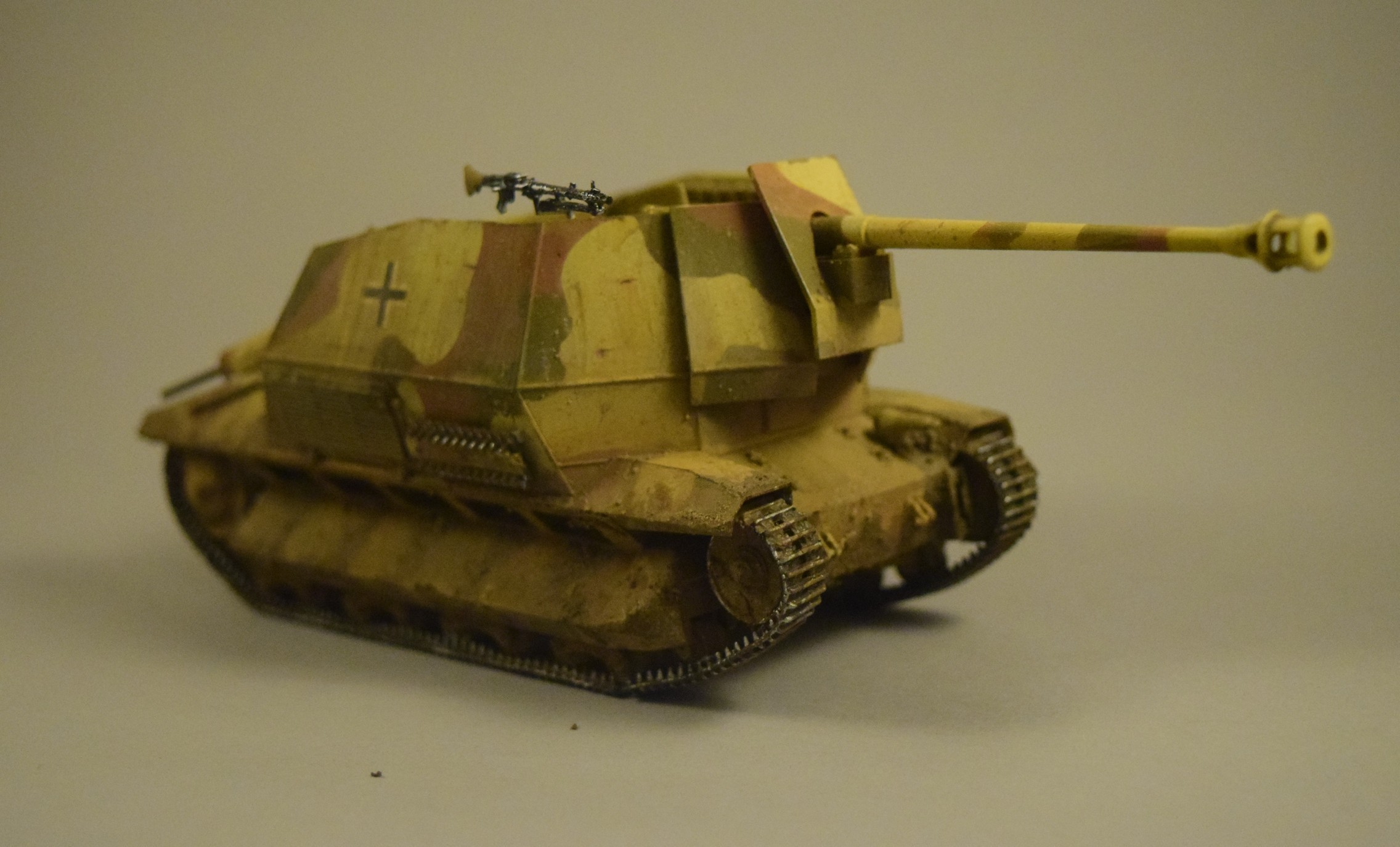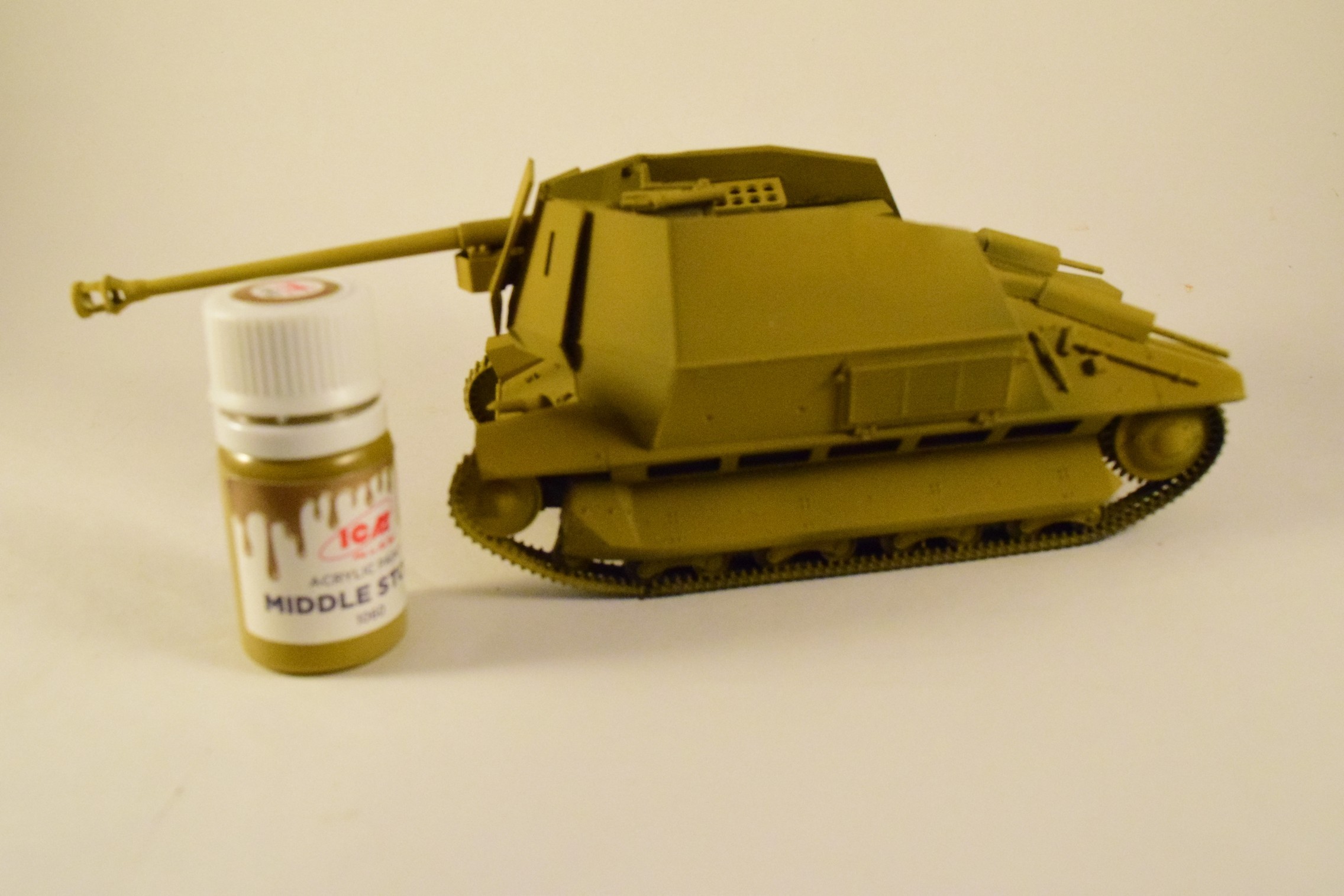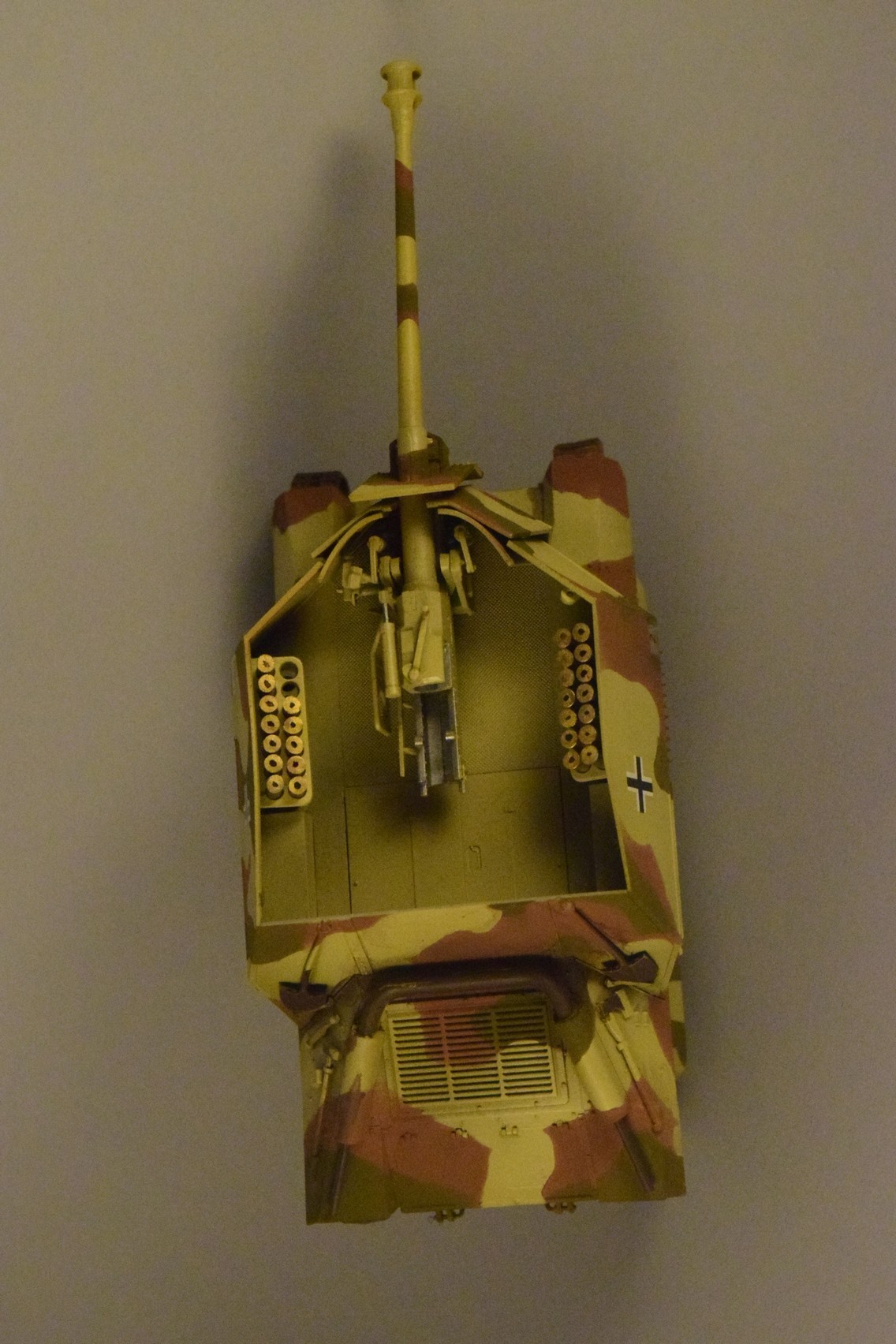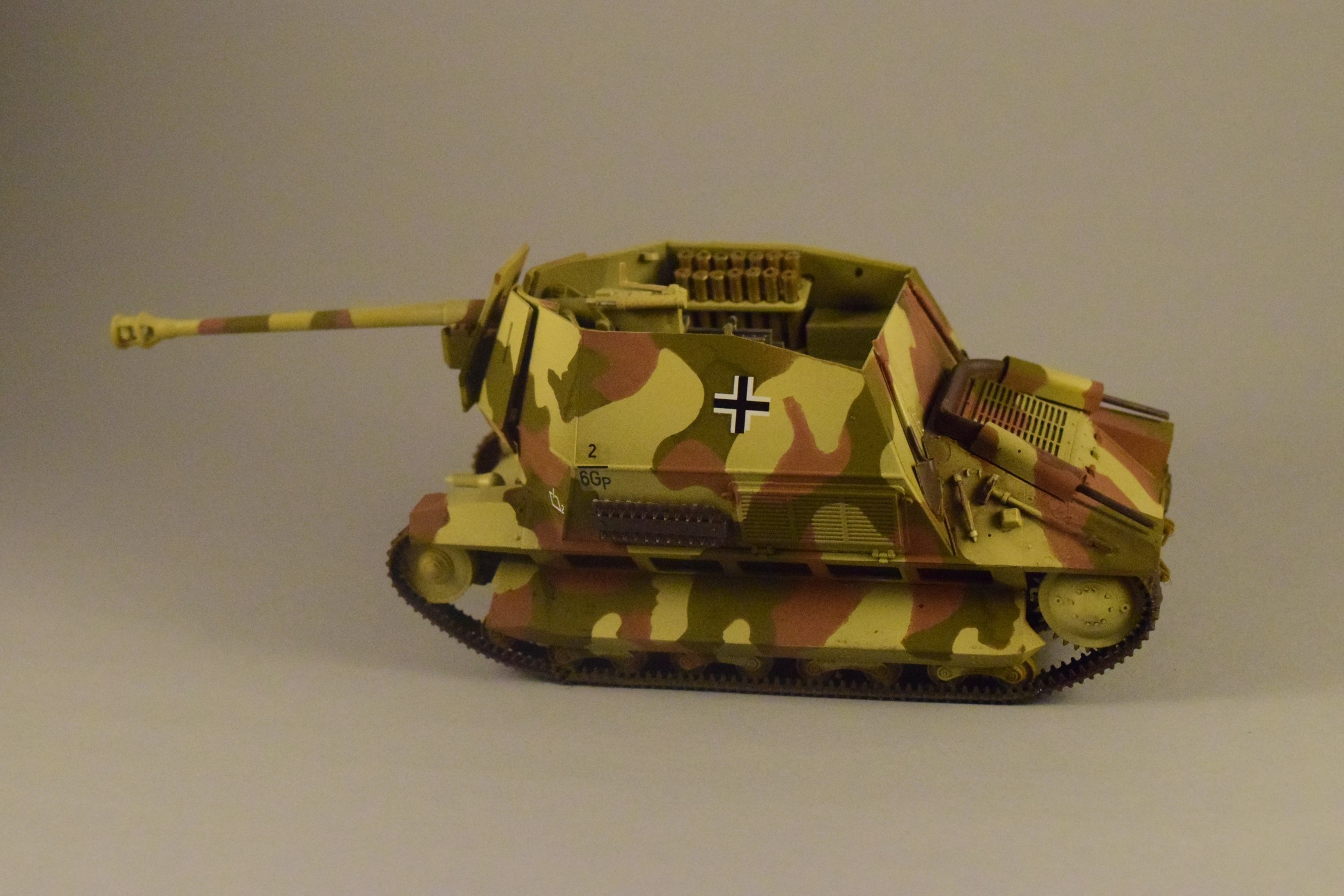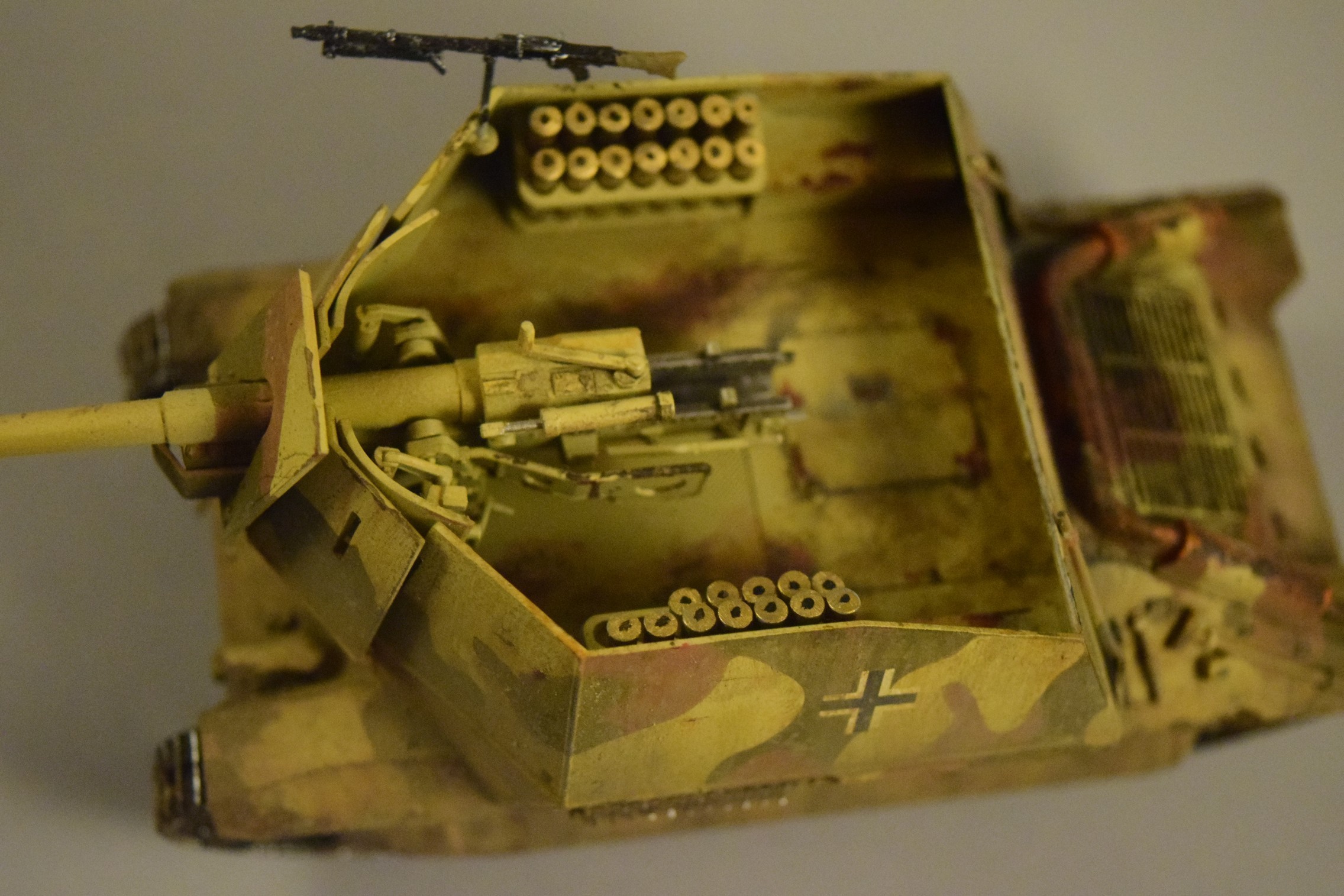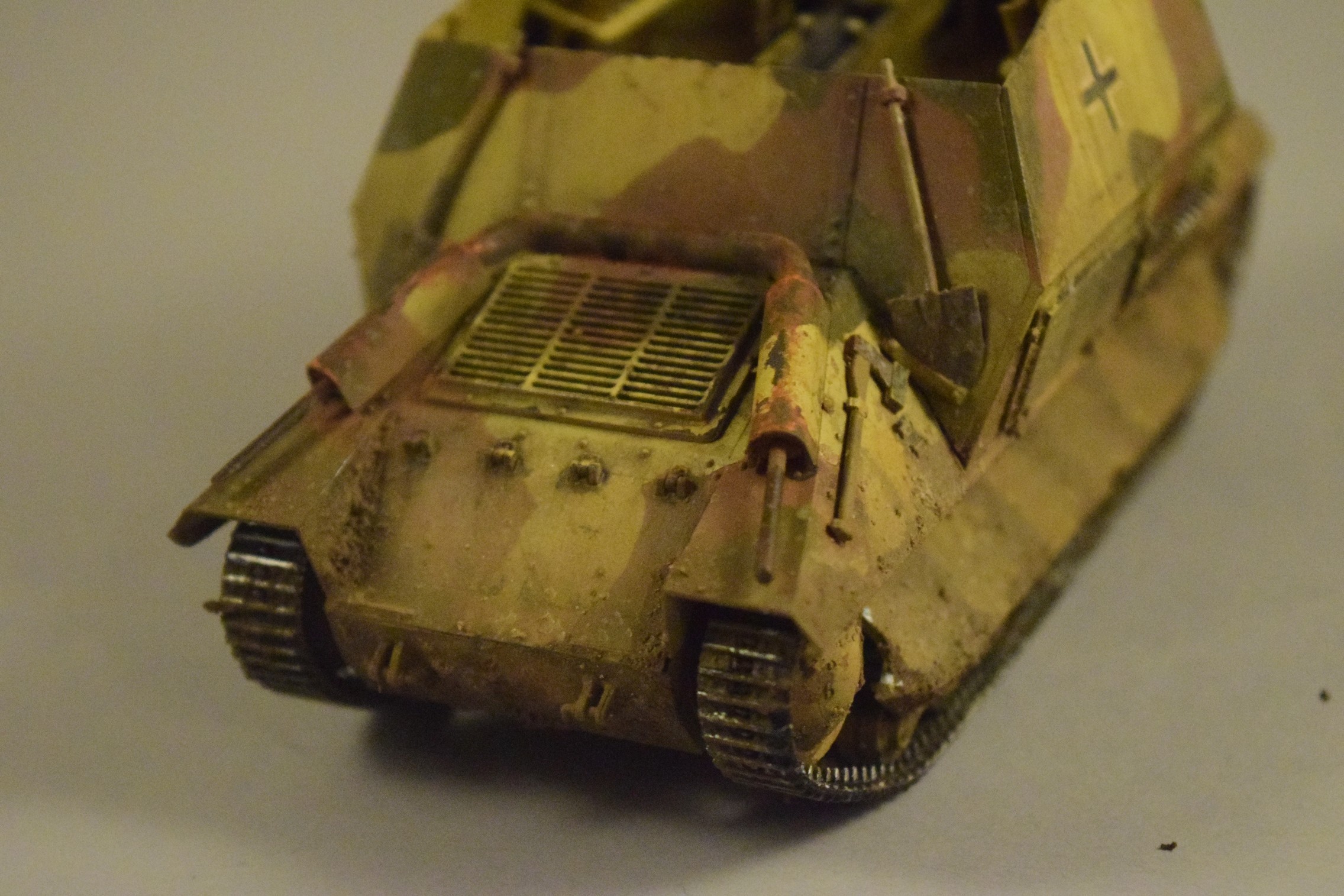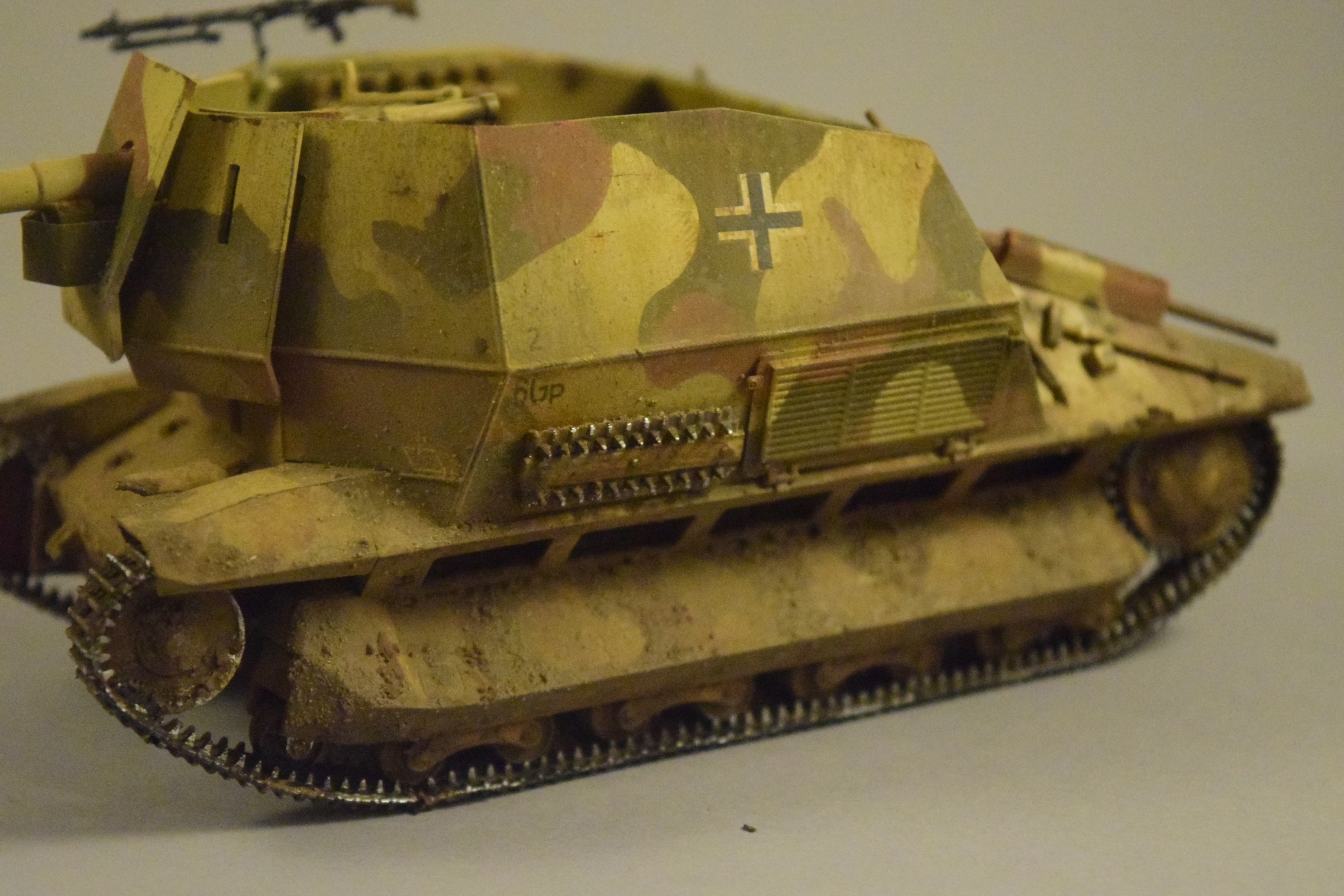If you want to read a review of the model, I published one on Armorama. I only learned about this tank destroyer from World of Tanks where it is an incredibly overpowered tier III premium vehicle.
In short: it is a simple, easy-to-assemble kit of a cool little tank destroyer. If you are a fan of this vehicle in World of Tanks and have no modelling experience, it is actually a model you can build with ease. If it was not a review sample coming with its own paint-set, I would have painted it in the “green grove” camo from WoT. ..
The paints performed admirably; the only issue I have -which might not be an issue at all- is that I find the base yellow (dunkelgelb) provided way too dark. (It is “middle stone” in the paint set.)
What I did was to use it as a base layer and “modulated” it with Mig’s Dunkelgelb…
I used silly putty for masking, and added the other two colors of the camo. The paints performed perfectly well; I had no problem using them with airbrush or brush, although they needed to be diluted with water heavily. (The paint is very thick,) Which is fine as you get a lot actually in those tiny, 12ml bottles.
Weathering…
I started with filters -ochre, brownish, a touch of green.
Then came the chipping, the wear-and-tear and rust inside: the trusty German Black Brown applied with a 0 sized brush. I applied some scratches and whatnot on the superstructure, and added a little bit of rust streak to some of them. (Most of it is hidden by the dust layers…)
Dust and mud were adding using these products mainly. The very light brown “light sienna” was a transformative product (any pigment would suffice, not just Vallejo’s); after all dry mud is almost grey in color. (One of my constant struggle with mud has been the unrealistically dark color.) The structured mud by Green Stuff World is essentially the same thing you can get from Tamiya or Vallejo- a thick paste you can dilute with water, and mix it with pigments, ink or acrylic paints (or anything water-soluble, really). There was no strict order or method – generally I tried to apply the lighter colors on a larger surface (dried, older mud, dust), used a wet brush to remove some of the material using vertical strokes, simulating rain and other effects, waited until it got dry, and went ahead with a thicker, darker mixture on a smaller area. I also applied some splashes using an old brush and a piece of card on the lower hull using several different shades.

